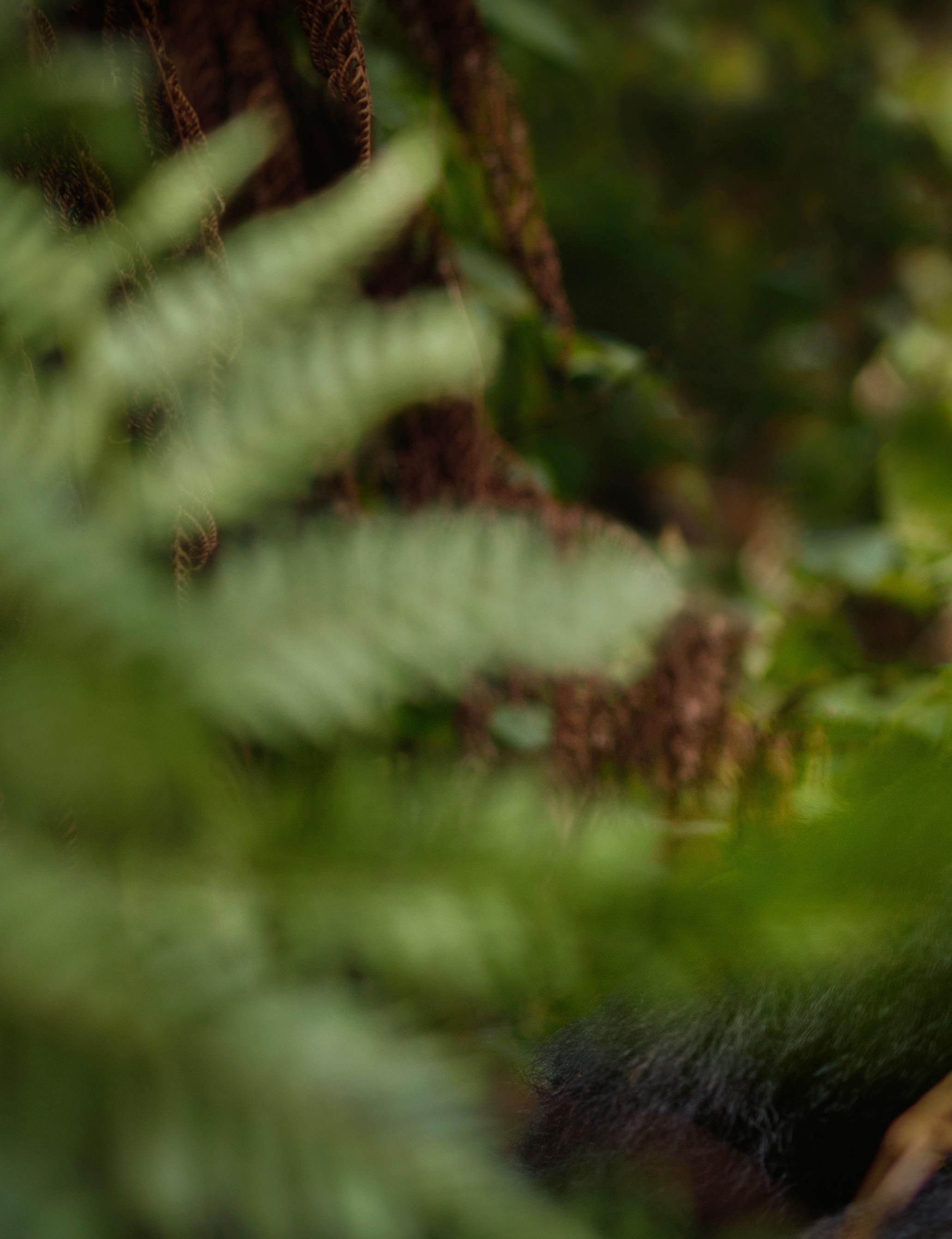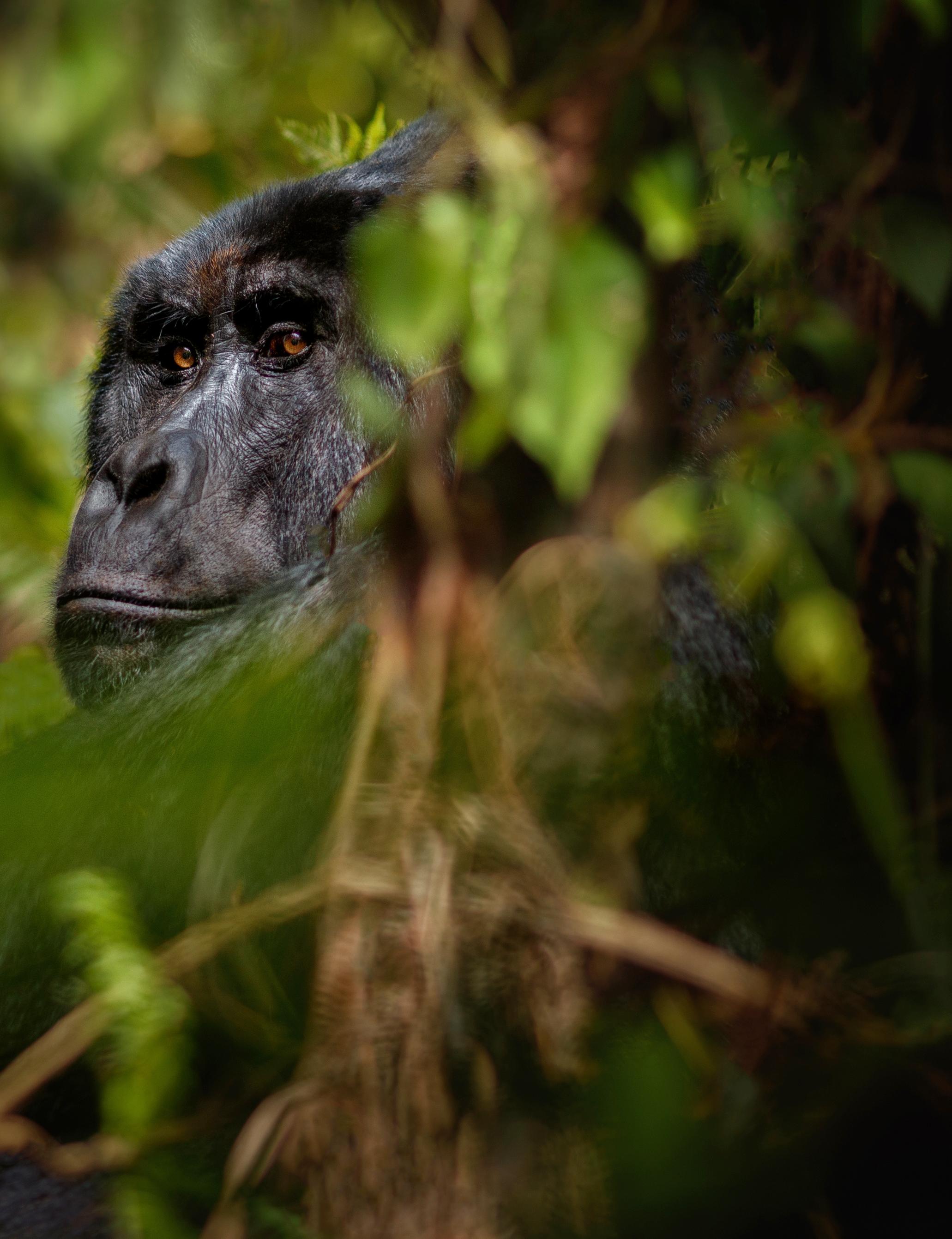
8 minute read
RWANDA
THE MOUNTAIN GORILLAS OF RWANDA
AND SO MUCH MORE
BY JACKIE MUINDE
eferred to as the land with a thousand hills,
RRwanda is characterized by an enormous stretch of mountains to the northwest that plays host to some of the world's last remaining mountain gorillas in and among the bamboo forests. The land of a thousand hills is blessed with extraordinary biodiversity, with incredible wildlife living throughout its volcanoes, montane rainforest, and sweeping plains.
From Gorilla tracking to cycling along the scenic countryside, Rwanda has so much to offer, which also explains why tourism in Rwanda is one of Rwanda's top foreign exchange earners.
Efforts to clean the streets have gathered momentum in recent years, elevating the tiny East African country back to its rightful place as a revered natural beauty destination.

AN UNFORGETTABLE TOURIST EXPERIENCE
If in need of an African adventure, then the Gorilla trails of Rwanda are something to have on your bucket list. They offer a unique opportunity to see gorillas in their natural habitat. Those who have visited them term the experience as unforgettable. Some even describe it as life-changing.
Encounters with gorillas as they go about their daily lives are carefully managed, with expert trackers and guides leading small groups of tourists up bamboo-covered slopes to spend a precious and awe-inspiring hour just a few feet away from the gentle creatures.
The largest living primates are spread across much of the equatorial African rainforest. Broadly speaking, the species is split into lowland gorillas and mountain gorillas. The endangered mountain gorilla is, however, only found in Rwanda, Uganda, and the Democratic Republic of the Congo. These are the animals you meet when you embark on one of the many annually organized tours.




Tours to view wild mountain gorilla groups have been organized since 1955, with the first attempts at habituation for this purpose occurring as early as 1966.
These early tourism programs displayed an almost complete lack of structure and control. The gorilla tourism program, launched in 1979 and later evolved into what is now known as the International Gorilla Conservation Program, ensures that the tracking of gorillas in Rwanda is safe and relatively accessible.
At the latest count, there are approximately 1,000 mountain gorillas in the wild, with 604 in the Virunga Massif. The distribution of the Virunga Mountain gorillas is limited to an approximate area of 447 square kilometers, which encompasses the Mgahinga Gorilla National Park in Uganda, the Virunga National Park in Rwanda, and the Mikeno sector of the Parc National des Virunga of the Democratic Republic of Congo. The population is slowly increasing, thanks to concerted efforts between our governments, communities, and NGOs.
While on the trail, you may be lucky to meet with one of the twelve gorilla families currently living in the Volcanoes National Park.
The families include Susa, Igisha, Karisimbi, Sabyinyo, Amahoro, Agashya, Kwitonda, Umubano, Hirwa, Bwenge, Ugyenda, and Muhoza. The groups or troops consist of at least one silverback, along with several females and youngsters.
INTIMATE ENCOUNTERS
Eight tracking permits are issued per troop per day, meaning the encounter is as intimate and as unobtrusive as possible.
Visitors gather at the Volcanoes National Park headquarters in Kinigi at 7 am and are allocated a family group on the day according to fitness levels. Briefing on protocols and rules for visiting the gorillas is also carried out at this time. Hikes up to their various locations can last anything from 30 minutes to four or more hours, reaching an altitude of between 2,500m and 4,000m.
Porters are available to carry backpacks and cameras, as well as to offer a helping hand along the route.
With only 96 permits available each day in Rwanda, it is highly recommended to book in advance, either online or via a reputable tour operator. You may want to avoid the peak season, which is usually in the period between June and September if you are the kind of person that prefers smaller crowds.
When you visit the gorillas, you not only get an unforgettable tourist experience but also get to contribute to the development of the surrounding areas as 10% of the revenue from the permits is channeled towards local communities, to build schools and health centers, as well as roads. There is also a compensation fund for local farmers should any gorillas damage their crops, which helps to ensure peaceful co-existence.

KWITA IZINA GORILLA-NAMING CEREMONY
A special time to visit the Volcanoes National Park is during the annual Kwita Izina gorilla-naming ceremony.
The naming ceremony involves assigning each gorilla born in the previous 12 months a carefully chosen name according to the baby's behavior and unique character traits. Rwandans believe naming the gorillas will encourage good fortune and play a prominent role in shaping their future.
The festivities during this time attract thousands of visitors each year. Since the naming was launched in 2005, about 350 mountain gorillas have been named.
If you get an opportunity to name these wonderful creatures, you will be joining a long list of notable personalities which include Rwanda's President Paul Kagame and UK monarch King Charles III.
Rwanda hosts this annual, week-long program of activities each September to raise awareness and funds for the ongoing protection of the country’s mountain


gorillas and the expansion of their habitat.
The ceremony is now accompanied by several other events, including a cross-country cycling tour and a conservation conference. At the naming ceremony itself, there’s music, dancing, and discussion about Rwanda’s great strides in gorilla conservation, and the great challenges that remain.
Thanks partly to the awareness of the need to protect the gorillas brought about by the gorilla naming ceremony and gorilla tourism, in general, poaching has significantly reduced and the number of gorillas has increased steadily.
A FULL PACKAGE FOR TOURISTS
There is so much more to Rwanda than its beautiful gorillas. While in the country, you can spare time and visit Rwanda's fourth National Park, Gishwati Mukura which is home to chimpanzees, golden, blue, and L'Hoest's monkeys as well as a host of birds and smaller animals. Nyungwe, one of the oldest rainforests in Africa, is also another destination ripe for exploration with its rich biodiversity and spectacular views. A small population of chimpanzees resides here as well as 12 other primate species, including the L’Hoest’s monkey, which is endemic to the Albertine Rift.
For lovers of Museums and everything historical, the Ethnographic Museum of Rwanda houses one of Africa's finest ethnographic collections. Seven galleries display historical, ethnographic, artistic, and archaeological artifacts accompanied by visual aids, giving visitors a rich insight into the Rwandan culture.
Lake Kivu, on the border between DRC and Rwanda, is dotted with islands and inlets along its shoreline, with charming beach resorts, spectacular vistas, and plenty of opportunities for hiking and cycling. A waterfront town on the shores of Lake Kivu, Rubavu, offers red sandy beaches, warm clean water, and an easygoing tropical character. Karongi is also a popular beach retreat on the shores of Lake Kivu, with majestic vistas and a tranquil atmosphere.
City explorers can get to experience the Kigali Memorial Centre Genocide Memorial, which is the site of one of the largest massacres in African history. The exhibition here is both shocking and thought-provoking and attempts to piece together the causes and events of the three-month genocide which destroyed Rwanda in 1994. Thousands of first-hand accounts are documented, and personal film footage and photography are showcased, illustrating the collection of events simply and strikingly.
GETTING THERE
Arriving in Rwanda is relatively easy as the capital is home to the Kigali International Airport, which is connected to major African cities and a few European capital cities. RwandAir, the nation's carrier, is worth a try as it offers some of the most affordable yet quality services in the 26 destinations across Africa, the Middle East, Asia, and Europe that it serves.
Once in Rwanda, tour operators can arrange for a vehicle with a driver, or you can opt for shared minibusses, which are the most popular form of public transport in the country. If you wish to explore the vast sceneries across the country from the skies, Akagera Aviation provides helicopter transfers and tours.
Need to refresh and feel at home, no worries, Rwanda has a variety of hotels that you can check into. Situated in Kigali, Hotel Chez Lando has a style that happily marries history and memory. Located five kilometers from Kigali city center, Radisson Blu Hotel and Convention Centre offers a contemporary option across 291 rooms.
One last thing to do before you jet back home is cycling. The land of a thousand hills is an excellent destination for off-the-beaten-track cycling, with almost endless trails and roads crisscrossing the territory. Exploring Rwanda's countryside on a bike will offer you one of the most authentic and rewarding ways to interact with the rural population and the huge dose of the natural beauty that comes with the countryside. If nothing else excites you, we most surely bet that this one will certainly be worth your while.










